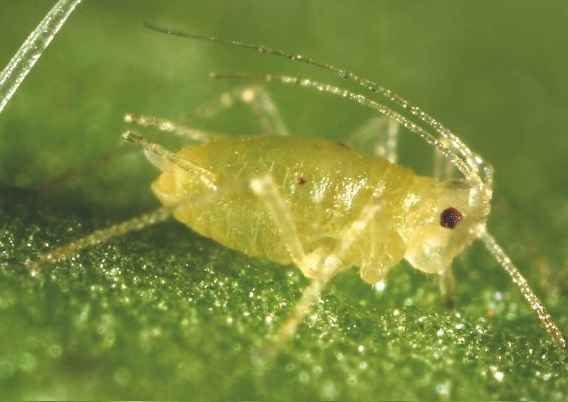
An 120-day emergency authorisation has been granted for the use of an insecticide for the control of peach–potato aphids to prevent virus yellows infection in sugar beet.
The emergency authorisation, applied for by British Sugar and NFU, permits up to two treatments of Biscaya (thiacloprid) per crop at a maximum individual dose of 0.4 L/ha.
The British Beet Research Organisation (BRRO) head of science Dr Mark Stevens said use should be driven by awareness of aphids in crops and treatment thresholds.
“We have doubled the yellow water pan network this year to provide growers with advance warning,” he said.
“There are 60 evenly distributed throughout the four factory areas and catches will feed into an interactive map where sugar beet growers can view their three closest water pans simply by entering the farm post code.”
Dr Stevens said that as soon as the map shows winged aphids being caught in the locality it is time to monitor crops.
Based on an assessment of 10 plants per field, the treatment threshold up to 12 true leaves is an average of one green wingless aphid per four plants.
From 12 to 16 leaves, as mature plant resistance comes in, it rises to one per plant. In accordance with integrated pest management (IPM) guidelines, assessments should be recorded.
Previously seed treatments were at work when winged aphids entered crops, but with foliar spraying there is often an unavoidable time lag from identification of a threshold to application of product.
Dr Stevens urged growers to move quickly to control aphids at threshold: “If you’re two days short of a herbicide timing, don’t wait for the opportunity to tank-mix.
“Get the insecticide on immediately. We don’t want secondary spread of virus within the crop, especially at early growth stages when virus yellows’ impact on yield is at its greatest,” he said.
Resistance management is important too, he added: “The emergency authorisation states that Biscaya should be used in alternation with insecticides of a different mode of action.
“Ideally we would want no insecticide applications but we may need three. So to comply with the emergency authorisation and IRAC resistance management guidelines, Biscaya should be used first. If further applications are needed, follow with Teppeki (flonicamid) then switch back to Biscaya.”
